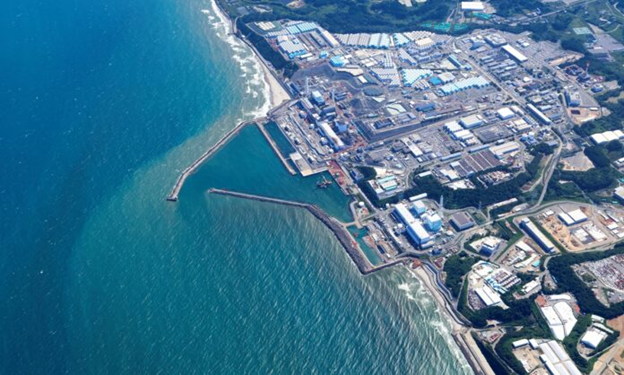First Phase Of Fukushima Treated Water Release Completed: What Have We Learned?

The release of treated and diluted water from the Fukushima Daiichi Nuclear Power Plant into the Pacific Ocean completed its first phase on Sept. 11. The process was initiated by Japan on Aug. 24.
At this stage, a series of encouraging developments has surfaced, underscoring the safety of products originating from the affected region.
Initial official statements, as well as findings from authoritative organizations and scientific assessments, confirmed the absence of harmful radioactivity levels in both water and fish, supporting Japan's responsible measures to address the issue in the plant, operated by Tokyo Electric Power Company (TEPCO).
On Sept. 8, the International Atomic Energy Agency (IAEA), which was overseeing the Advanced Liquid Processing System (ALPS), provided promising indications that the discharge parameters were better than expected.
The indications came after IAEA conducted its first independent seawater sampling since Japan's release of ALPS treated water. Tests were conducted by a dedicated IAEA staff on fish, seawater, and seaweed at various locations in the ocean and from the coast, within three kilometers of the FDNPS.
The IAEA's results were consistent with the values reported by TEPCO, with all measurements falling below the World Health Organization's standards for tritium limit in drinking water of 10,000Bq/Liter. Moreover, the live monitoring from FDNPS, which is accessible on the IAEA website, broadcasts a level of 6.5 CPS emitted radiation (on Sept. 19), indicating the absence of an unexpected level of radiation.
The IAEA's assessment aligns with multiple findings, including that of the Japanese Fishery, as well as those performed by other official agencies in the Pacific region. The Singapore Food Agency (SFA) had similarly weighed in on this matter in a statement released on Sept. 3. The SFA issued an official response to address concerns raised by a Wall Street Journal podcast/article titled "More Countries Ban Import of Japanese Food," and confirmed that no contaminated food samples from Japan were detected nor ban on food products implemented in Singapore, following the treated water release from the FDNPS. This authoritative statement effectively refuted previous claims made in the podcast.
The statement further redirected readers toward the website of the Ministry of Sustainability and the Environment of Singapore, recalling the National Environment Agency's assessment that "Japan's planned discharge of treated radioactive water from the Fukushima Nuclear Plant into the sea is unlikely to impact the seawater quality in or around Singapore waters."
After understanding the international significance of the treated water's release, Japan's leadership put a lot of efforts into gaining official support worldwide. It appears that these efforts, led by Prime Minister Fumio Kishida and the Japanese Ministry of Foreign Affairs, have been successful. Over the past month, multiple countries have expressed their assurance and confirmation toward the ALPS discharge process as well as the monitoring system established by TEPCO and overseen by the IAEA. These countries include the United States, Australia, MENA and GCC countries, as well as European Union countries, including France and the Netherlands.
Several actions were even undertaken by officials worldwide to showcase their support. For example, Rahm Emanuel, the U.S. ambassador to Japan, visited a fishery cooperative in the Fukushima Prefecture a few days after the initiation of the water release. Moreover, on Sept. 4, he was seen eating fish paste at a Fukushima Prefecture product store in Tokyo, highlighting the safety of the fish caught off the northeastern Japan prefecture, following the release of the treated water.
Similarly, the Australian Ambassador to Japan, Justin Hayhurst, took to Twitter on Sept. 5 to demonstrate confidence in the safety of products from Fukushima by sharing a video showcasing embassy personnel enjoying fish from the region. This public endorsement further underscored the international consensus that rigorous testing and responsible disposal of treated water have upheld safety standards.
Even influencer activists have shown an interest toward the Fukushima treated water release. The scientific aspect of the topic was often tackled by YouTubers such as Kyle Hill, who commented on the data monitored. A significant part of those observers underlined that the water released from the FDNPS was compliant with international safety standards, and that the remaining level of tritium in the treated released water was safe.
The topic was also raised at the ASEAN Summit (Sept. 4-7) and G20 Summit (Sept. 9-10), where Kishida secured an understanding on the safety of the releasing of treated wastewater from the Fukushima nuclear power plant, in accordance with international standards. The release has also been evoked during the high-level week of the 78th United Nations General Assembly.
The collective evidence and endorsements from reputable organizations and nations signify a positive trajectory in ensuring the safety and quality of products originating from the Fukushima region. As the release continues to be monitored and assessed, the proactive measures implemented by Japan have yielded encouraging results.




















